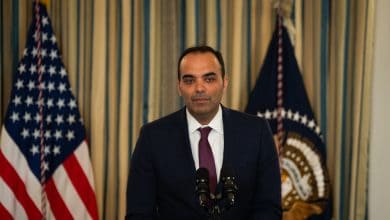Fed Chair’s Message Is Clear: The Fight Against Inflation Isn’t Over

Jerome H. Powell, the chair of the Federal Reserve, used a closely watched speech to make clear that the central bank does not yet think it has gotten inflation fully under control and stands ready to raise interest rates further if needed.
Mr. Powell, who was delivering a speech Friday at the Federal Reserve Bank of Kansas City’s annual Jackson Hole conference outside in Wyoming, said that the Fed would “proceed carefully” as it decided whether to make further policy adjustments after a year and a half in which it had pushed interest rates up sharply.
But he also said that officials are warily watching economic data — which has been surprisingly resilient in recent months — as they try to assess how much their higher interest rates are really cooling the economy.
And Mr. Powell pledged in the remarks to stick with his quest to lower inflation “until the job is done.” Overall, the speech hammered home one main point: Fed policymakers are not ready to declare victory over inflation after a few good reports that have showed significant moderation in price increases. Officials want to see more progress to convince them that they truly have the situation under control.
“The message is the same: It is the Fed’s job to bring inflation down to our 2 percent goal, and we will do so,” Mr. Powell said, comparing his speech to a stern set of remarks he delivered at last year’s Jackson Hole gathering.
Central bankers have lifted interest rates to a range of 5.25 to 5.5 percent, up from near-zero as recently as March 2022, in a bid to cool the economy and wrestle inflation lower. They have been keeping the door open to the possibility of one more rate increase, and have been clear that they expect to leave interest rates elevated for some time. Mr. Powell kept that message alive on Friday.
“We are prepared to raise rates further if appropriate, and intend to hold policy at a restrictive level until we are confident that inflation is moving sustainably down toward our objective,” he said.
But the Fed chair noted that “at upcoming meetings we are in a position to proceed carefully as we assess the incoming data and the evolving outlook and risks,” and that officials would “decide whether to tighten further or, instead, to hold the policy rate constant and await further data.”
That suggests that central bankers are not determined to raise interest rates at their upcoming meeting in September. Instead, they might wait until later in the year — they have meetings in both November and December — before making a decision. Striking a patient stance would give them more time to assess how the moves they have already made are affecting the economy.
Mr. Powell’s resolved message came despite recent progress in slowing inflation. The Fed aims for 2 percent inflation per year: enough to grease the wheels of the economy, but not so much that it weighs heavily on consumers’ minds and shapes how people make economic decisions.
Inflation has come down notably in recent months, to around 3 percent. But after stripping out food and fuel for a look at the underlying trend, the central bank’s preferred inflation gauge is still running at about twice the Fed’s goal.
“The process still has a long way to go, even with the more favorable recent readings,” Mr. Powell said of inflation in his speech, which mostly focused on that core inflation rate. “We can’t yet know the extent to which these lower readings will continue or where underlying inflation will settle over coming quarters.”
That is partly because the Fed is trying to assess how much its policy adjustments are really weighing on the economy and, through it, inflation.
Mr. Powell acknowledged that it was unclear how much the Fed’s current rate setting is weighing on the economy. While rates are much higher than most estimates of the level that would be necessary to weigh on growth based on theory and models, such estimates are subject to error.
“There is always uncertainty about the precise level of monetary policy restraint,” he said.
Higher rates have clearly slowed the housing market, and their effects are still trickling through the economy to cool the job market and discourage big consumer purchases made on credit. But so far, overall labor and consumption data has held up surprisingly well in the face of the Fed’s onslaught. That has caused some economists to warn that there is a risk that the economy could speed back up, keeping inflation elevated.
“We are attentive to signs that the economy may not be cooling as expected,” Mr. Powell acknowledged. “Additional evidence of persistently above-trend growth could put further progress on inflation at risk and could warrant further tightening of monetary policy.”




